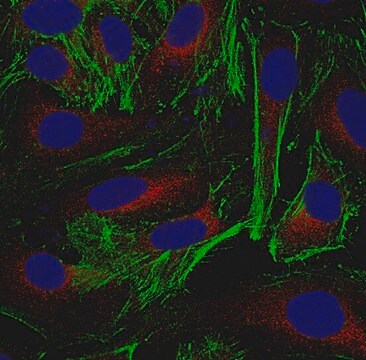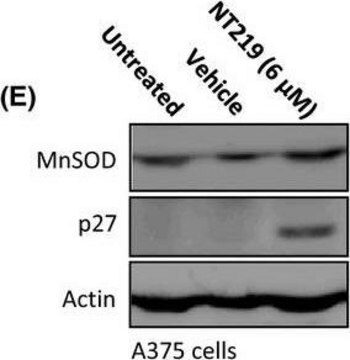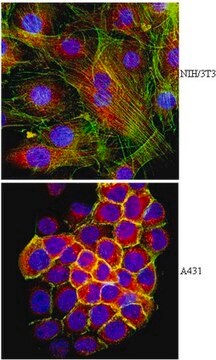MABT1333
Anti-pan-Actin Antibody, clone 2A3
clone 2A3, from mouse
Sinónimos:
Skeletal muscle alpha-actin, Smooth muscle alpha-actin, Cytoplasmic beta-actin, Cardiac muscle alpha-actin, Cytoplasmic gamma-actin, Smooth muscle gamma-actin
About This Item
Productos recomendados
biological source
mouse
antibody form
purified immunoglobulin
antibody product type
primary antibodies
clone
2A3, monoclonal
species reactivity
human, rat, monkey, yeast, hamster, Drosophila, mouse
packaging
antibody small pack of 25 μL
technique(s)
western blot: suitable
isotype
IgG1κ
NCBI accession no.
UniProt accession no.
target post-translational modification
unmodified
General description
Specificity
Immunogen
Application
Cell Structure
Quality
Western Blotting Analysis: A 1:500 dilution of this antibody detected Actins in HeLa cell lysate.
Target description
Physical form
Storage and Stability
Other Notes
Disclaimer
¿No encuentra el producto adecuado?
Pruebe nuestro Herramienta de selección de productos.
Certificados de análisis (COA)
Busque Certificados de análisis (COA) introduciendo el número de lote del producto. Los números de lote se encuentran en la etiqueta del producto después de las palabras «Lot» o «Batch»
¿Ya tiene este producto?
Encuentre la documentación para los productos que ha comprado recientemente en la Biblioteca de documentos.
Nuestro equipo de científicos tiene experiencia en todas las áreas de investigación: Ciencias de la vida, Ciencia de los materiales, Síntesis química, Cromatografía, Analítica y muchas otras.
Póngase en contacto con el Servicio técnico








